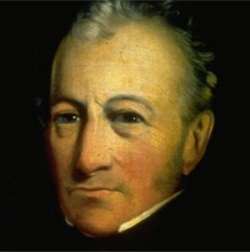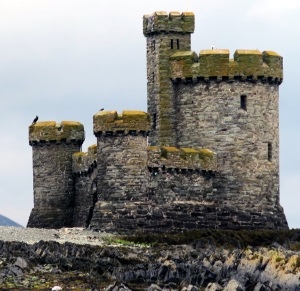Founder of Royal National Lifeboat Institution motivated by experience of shipwrecks around the Manx coast

The Royal National Lifeboat Institution (RNLI) is a charity that saves lives at sea around the coasts of Ireland, Scotland, Isle of Man, Wales, Cornwall as well as the Channel Islands and England. Founded in 1824 as the National Institution for the Preservation of Life from Shipwreck, its name subsequently changed to the Royal National Lifeboat Institution. The Institution is extremely highly regarded for the work it undertakes in often treacherous conditions and the bravery of its crews. Motivated by the selfless aim to save lives, it has saved some 140,000 lives since its foundation, at a cost of more than 600 lives lost in service.
The founder of the RNLI was William Hillary (4 January 1771 – 5 January 1847) who moved to the Isle of Man (Manx: Mannin) in 1808. He saw at first hand the many ships being wrecked around the Manx coast and experienced the treacherous nature of the Irish Sea that surrounds the Island. He was inspired to drew up plans for a national lifeboat service manned by trained crews, which was intended not only for the Isle of Man, but for the coasts of all the adjacent islands. He had to campaign hard and be persuasive in garnering support for his proposal, but was successful.

William Hillary had taken part, along with local people in saving lives from ships wrecked on the Manx coasts. One such incident was the 1830 rescue of the ship St George which had foundered on Kione y sker, which is a partially submerged reef in Douglas Bay (Manx: Baie Doolish). The Manx name Kione y Sker can be translated into English as 'head of the reef'. It has been corrupted over the years to Conister. The protruding part of the reef is also known as both Conister Rock and St Mary's Isle, along with the Manx names Kione y Sker or Creg Voirrey. William Hillary was aged 60 when he took part in the 1830 rescue of the St George. He was in command of the lifeboat that rowed out into rough seas in aid of the stricken vessel. He along with other of the lifeboat crew were washed overboard a number of times. In the end their mission was successful and everyone aboard the St George was rescued without loss of life.

Kione y Sker was a notorious hazard to shipping and given the number of ships that came to grief on the reef, William Hillary was inspired to build a stone-built castellated structure on the rock. Known as the Tower of Refuge the granite structure is built in the style of the 13th century, with parapets and corbels similar to those of two castles in the Isle of Man; Peel Castle (Manx: Cashtal Purt ny h-Inshey) and Castle Rushen (Manx: Cashtal Rosien). When the tower was completed in 1832 it was kept well stocked with fresh water and bread, for any shipwrecked person stranded on the rock. The Tower of Refuge continues to stand proudly in Douglas Bay. It is an impressive monument to the work undertaken by the RNLI and its brave crews as well as to its founder William Hillary. He died on 5 January 1847 in Douglas at the age of 76.
- Pan-Celtic
- English






